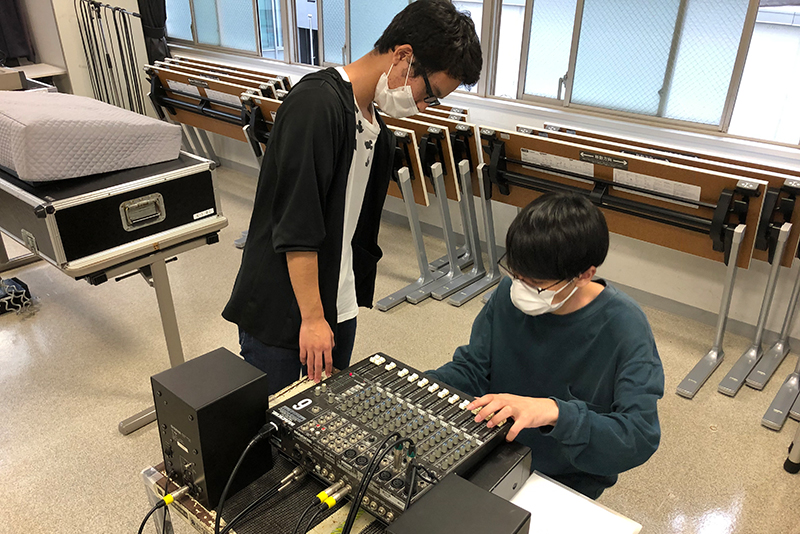Classroom Sound Studio
SoundLite™ or SoundLite 30W – the answer for classroom sound. Each system produces clear audio, yet is small and easy to install almost anywhere. Combines a 2 x10 W dual-channel Class D amplifier system with two high-efficiency, full-range “echo tube” speakers, for superb clarity even at peak power. Flagship studio. 34' x 23' studio with a 23'x16' stage including drum riser. Brand new DW / PDP 5-pc drum set with DW 5000 series hardware, Marshall 1/2 stack JCM-900 Guitar rig, Ampeg 8 x 10 cab with Hartke amp. Digital classroom Soundtrap integrates with Noteflight and Flat.io, and also with LMS platforms like Google Classroom, Canvas, Schoology and Musicfirst. Creation, assessment, and evaluation of assignments is smooth and seamless. Soundtrap is committed to being responsive to the future-ready classroom. Zero Noise Classroom by Google Chrome. How it works: You set a timer for this classroom noise monitor, and current sound levels appear in the background as it runs. Light shades indicate quiet, while darker gray means the classroom has gotten louder.
33 E. Ida B. Wells Drive, Lower Level

Fine-tune your skills in our professional-level music production facilities. Used for course projects and in-class instruction, we have three control rooms linked to two studio spaces, complete with absorption/diffusion panels for a variety of instrumental setups and access to the Audio Arts and Acoustics' musical instrument collection, including a Yamaha C7 grand piano.
Recording Studios


Classroom Sound Studio Design
Control Room A
Control rooms A and B serve as the main analog/digital music production facilities for Audio Design and Production courses in the Audio Arts and Acoustics Department.
Control Room B

Control Room C
Control Room C serves as an intimate auditorium space that can accommodate an audience of 25. The room incorporates high-definition video projection and surround sound systems for mixing and listening.
Classroom Sound Studio App
Reading many Instructables, perhaps the majority show an appalling lack of grammar and the inability to effectively communicate a linear process in a clear manner. If one wishes to write up their project, it is essential to assume the reader has no understanding of the process and include each step, materials, sources, etc. so they can successfully complete the project. An Instructables author must proofread their work, by assuming the reader knows nothing. They must also carefully check their writing for mistakes in grammar, usage and spelling.
Classroom Sound
This Instructable was very good in the information presented, but could use some grammar checking and the author could have avoided some confusing instructions and lack of sources had he asked several friends to read it over. One thing he did not mention is to make the walls of the inner room asymmetrical in order to avoid a standing wave. Apart from this, I think he covered the major and minor points of soundproofing quite well. One suggestion is to use Green Glue to seal the drywall.
